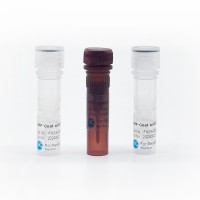Microinjection of Antisense Oligonucleotides and Electrophysiological Recording of Whole-Cell Currents as Tools to identify Specific G-Protein Subtype
互联网
536
Heterotrimeric guanosine triphosphate (GTP)-binding proteins (G proteins) act as transducers and amplifiers between activated heptahelical membrane receptors and effector systems such as enzymes, ion channels, and transporters to mediate signals from the outside to inside of cells. The G-protein subtypes are defined by the a-subunits, of which 23 are known by now. Functional, active heterotrimeric G proteins include β- and γ-subunits as well. Currently, at least five different β- and 11 different γ-subforms are known (for review, see ref. 1 ) In many cases, the coupling between receptor and G protein is not selective; one given receptor activates more than one G protein and thus mitiates more than one signal-transduction pathway. On the other hand, there are numerous examples showing that different receptors activate one type of G protein to regulate the same effector system; e.g., there is inhibition of voltagegated calcium channels by various hormones in neuronal and endocrine cells via G0 (for review, see ref. 2 ). In all cases, the question arises whether the different receptors recognize the same heterotrimeric G proteins or whether the receptors see different specific heterotrimers, varying in the subform composition of the β- and γ-subunits. Free combmation between all subforms of G-protein subunits would result in several hundreds of specific heterotrimers.









